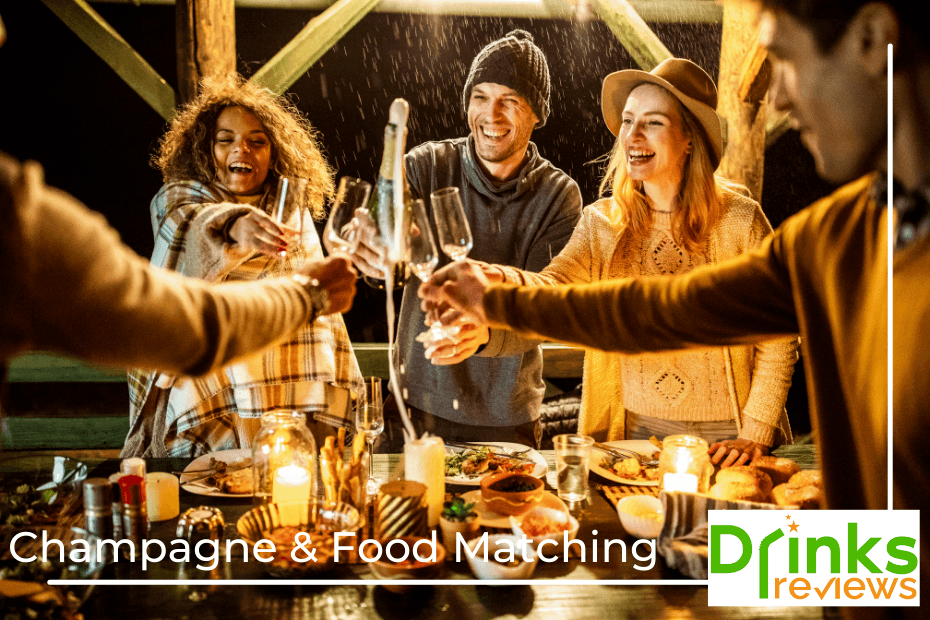When you think of champagne, what is the first thing that comes to mind? For me, it’s the popping of the bottle on New Year’s Eve at midnight or sipping a glass with a posh afternoon tea. For you, it may be a trip to France, your graduation party, or the wedding toast you gave. Whatever the case may be, we associate champagne with happy memories. So let’s look at making those memories even better through Champagne and food matching.
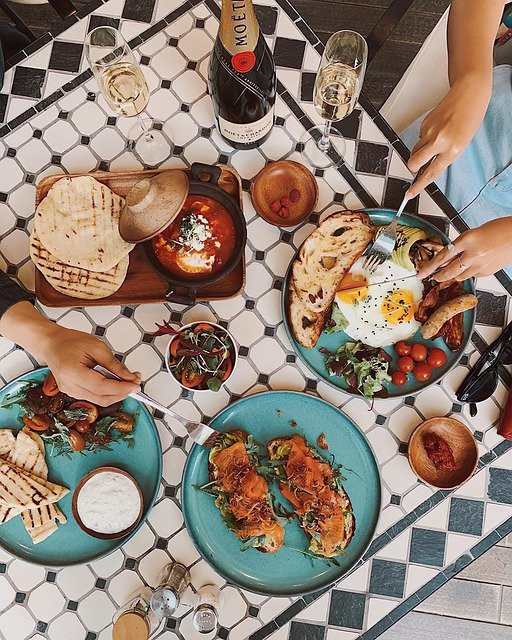
Champagne is a really versatile wine, however, due to its cost, we’re often a bit wary of experimenting when food pairing and stick with the classic combinations. This is a bit of a crime really, as there are plenty of opportunities to explore the food-friendly nature of champagne, so for your next dinner party, here are some different combinations to try.
Understanding Champagne
Understanding Champagne can be difficult since not only is it made according to strict laws, but the French also adhere to strict nomenclature (naming system – check out the wine glossary for a brush up on wine terms). But don’t worry, we’ll explain everything!
Champagne is a sparkling wine that originated in the Champagne area of France and is still made there today. Chardonnay, Pinot Noir, and Pinot Meunier are the main grapes used to make our favourite sparkling wine. The processes involved in making champagne, which the French refer to as Méthode Traditionnelle (which translates to “traditional method”), are as follows:
The grapes, which must be handpicked, are used to make a still wine known as base wine.
Following that, skilled sommeliers consider which base wines should be blended together to make the optimal blend (cuvée in French) that will later become champagne.
After the blend is complete, winemakers add yeasts and 24 grams of sugar per 1 liter.
The wine is then bottled, and a second fermentation process takes place within the bottle.
When the wine has been aged for at least one and a half years, winemakers add sugar in the form of a syrup (known as liqueur d’expedition) and voilà, Champagne is ready.
Champagnes are categorised into the following styles, ranging from the driest to the sweetest, based on the amount of sugars in the liqueur d’expedition:
Brut Nature – Dry: 0-3 grams of sugar per liter
Extra Brut – Dry: 0-6 grams of sugar per liter
Brut – Dry with some notes of sweetness: 0-12 grams of sugar per liter
Extra Sec – Ranging from slightly to noticeably sweet: 12-17 grams of sugar per liter.
Sec – Noticeably sweet: 17-32 grams of sugar per liter
Demi-Sec – Sweet: 32-50 grams of sugar per liter
Doux – Very sweet: 50+ grams of sugar per liter
Each of these styles is unique and some might be more suitable for you than others so feel free to try them and find out what suits your palate best.
Nutrition
One thing that has come more and more to the forefront in the UK, especially since calorie information is now, often unpopularly, included on restaurant menus, is the question of how many calories are in a glass of Champagne. And given that we’ve just spoken about the different levels of sugar between Champagne styles, it is relevant to include it here so that you can make an informed decision regarding your recipes and food pairings.
The standard glass of Champagne considered in the table below is a 150ml flute.
| Style | Calories |
| Brut Nature | 93 |
| Extra Brut | 96 |
| Brut | 98 |
| Extra Sec | 101 |
| Sec | 111 |
| Demi-Sec | 121 |
| Doux | more than 121 |
Vintage Champagne versus Non Vintage
The advantage of Non-Vintage Champagne is consistency – it is made so that its always very similar in style – you know what you’re going to get from bottle to bottle and year to year. So if you find one that you like, remember it because it will always be the same.
Vintage Champagne is made to enhance the unique characteristics of each year’s harvest – so much so that fancy restaurants sometimes find bottles being returned by people who have splashed out on vintage but usually drink non-vintage Champagne and don’t expect it to taste different.
Can you open your Champagne with flair? For a refresher, take a look at this guide.
Food and Wine Pairings for Champagne
But one of the exciting things about Champagne food pairing is that its high acidity, coupled with the bubbles make it an excellent accompaniment to high-fat content foods – like fish and chips, fatty cheeses, or fried chicken. Every style of Champagne has its ideal food pairings, some more common and some weirder than others. Let’s dive in on what to eat with champagne.
Classic Pairings
Eggs Benedict
Champagne matches perfectly with this breakfast dish, and if you’re anything like me, you probably feel extremely posh when you have a glass of bubbly with your Saturday brunch. I mean, why shouldn’t we treat ourselves? We most definitely deserve it.
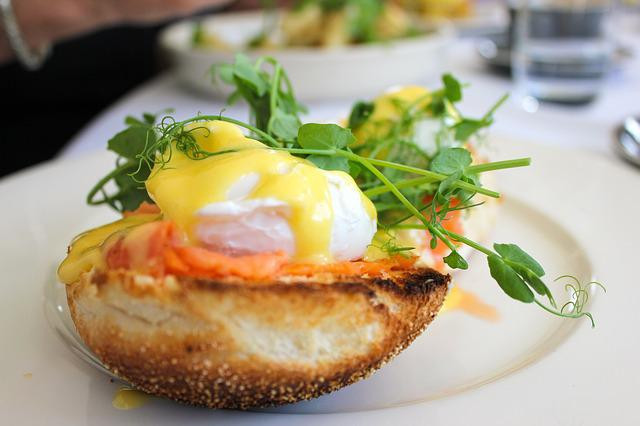
If you enjoy your eggs served with some freshly cut sweet cherry tomatoes on the side, pair your dish with a glass of extra-sec or sec champagne that will balance the acidity of the tomatoes. If on the other hand, you prefer your eggs plain, or on a piece of toast, try a dry Champagne that will enhance but not overpower the simplicity of this tasty dish.
Oysters
Champagne with seafood is a classic pairing, there is no arguing with this – just look at all the Oyster and Champagne bars at airports. Oysters have a distinctive taste that instantly transports you to the sea-side, while champagne has characteristic notes of bread, due to the yeasts used in its making. This combination will definitely provide some depth to the tasting experience that will make you long for the summer.
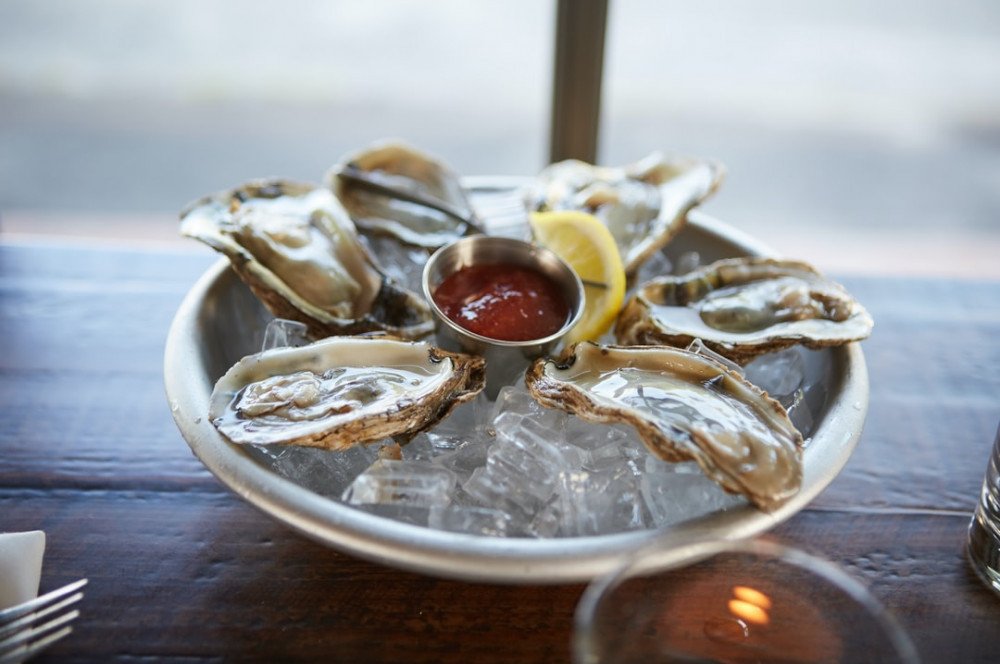
If oysters aren’t quite your thing, or if you’re allergic to shellfish like I am, consider substituting in a white fish in a buttery sauce instead.
Quirky Pairings
Mac ‘n Cheese
This dish is an undeniable favourite! It’s easy to make and there is something very comforting on that first bite of warm mac ‘n’ cheese. Would you ever think about pairing it with a glass of bubbly wine? If you haven’t already tried it I definitely recommend giving it a go. Dry champagnes, from brut nature to brut, match perfectly with this meal. The acidity and crispness of these wines will cut through the creaminess of the cheese, leaving each bite feeling light and refreshing.
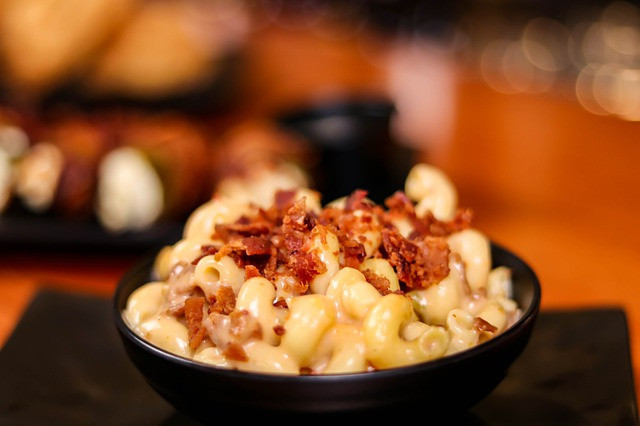
If Macaroni Cheese really isn’t your thing, try those same creamy cheese flavours in a cheeseboard with your non-vintage Champagne or aim for a complex and aged vintage Champagne for mature hard cheeses – but steer away from blue cheese completely – it’s not a great pair at all. But do reconsider your view on Mac & Cheese – it’s a millennial classic for a reason, especially with a bit of umami flavouring from some truffle grated in!
Mushrooms
This is for my vegan pals. Don’t worry, I’ve got you covered! Mushrooms are not only tasty and low on calories but they can also be cooked in so many different ways. Whether you like mushroom soups on cold days or a fancy mushroom burger, a glass of champagne will definitely enhance the flavours of your meal.
And if you’re mushroom phobic, the same umami flavours, but without the mushroom texture can be found in ramen. I bet you didn’t expect to be pairing that with Champagne when you woke up this morning!
Fried Food:
Fried Chicken
This is another unusual food combo that I’m sure you’ll enjoy! Whether you prepare the meal yourself or you just want to grab a bucket of chicken on your way home after a long day, this pairing will blow your mind. The crispy acidity of the champagne will cut through the fat of the fried chicken and you’ll be reaching for a second piece before you even know it.
If you prefer your meal served with a creamy sauce opt for a dry champagne that will balance the flavours. If you prefer spicy flavours – and I’m looking at you spicy chicken wings here, a glass of sweet champagne will cool the heat caused by the spices.
Fish and Chips
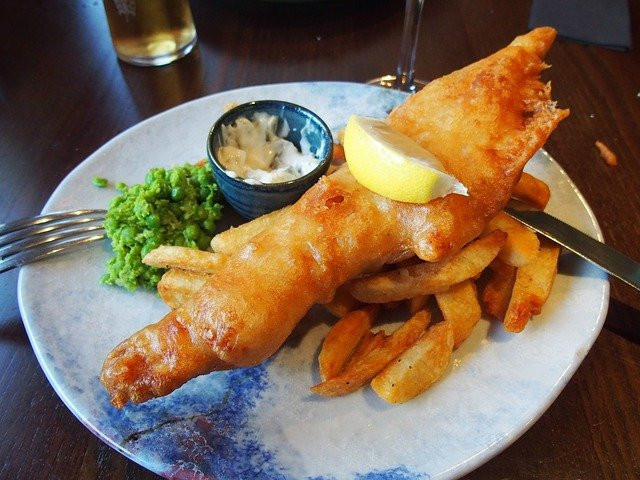
I know what you’re thinking, this is a classic dish to match with beer, but trust me on this: a glass of bubbly will definitely change your mind on food pairings. Champagne goes perfectly with anything salty, from plain chips to fish and chips, and the bubbles cut straight through the fat in the crispy fish batter. A dry sparkling wine’s acidity and freshness will make you feel as if you’ve just squeezed a lemon on top of your meal.
Sweets
It’s a common misconception among novice Champagne drinkers that sparkling wines don’t really accommodate pairing with sweets – however, it couldn’t further from the truth. In fact, in a 1896 brochure published by the Champagne Houses it was noted:
“There is a regrettable but all too common misconception, especially among the French, that Champagne should be reserved for the sweet course.” (maisons-champagne.com)
This is for all of you who have a sweet tooth. Doux champagne styles can range from pleasantly sweet to “I need a glass of water right now” sweet.
Desserts
If you prefer less sweet champagne, try pairing it with fruit desserts or creamy desserts like fruit pavlova, pannacotta or lemon meringue pie. Although the Italians would prefer you went for Prosecco or limoncello with these.
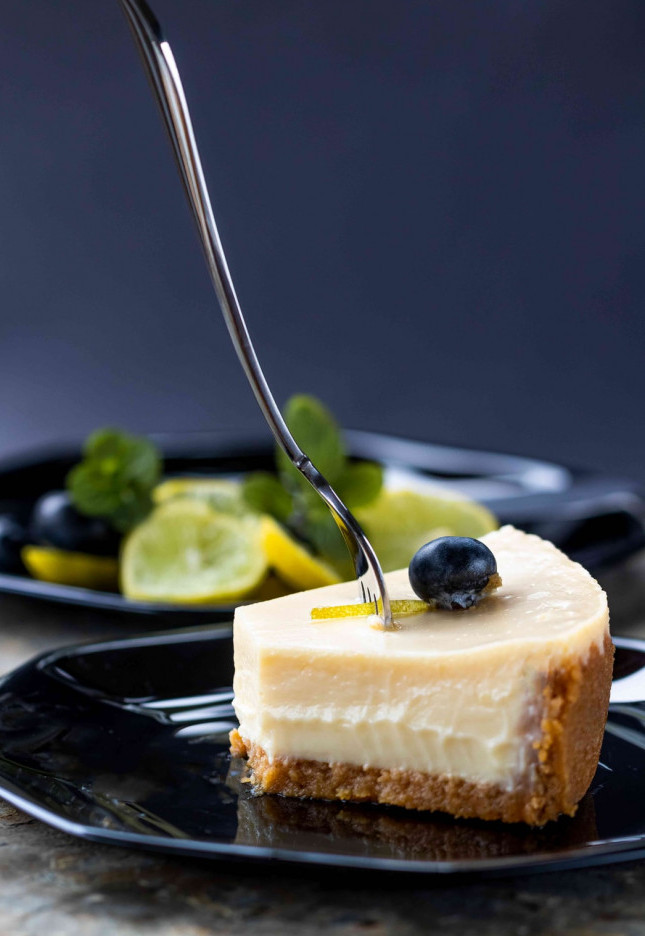
Chocolates
If you prefer your desserts on the sugary/chocolatey side, try matching sweeter Champagnes with sweet dishes such as chocolate truffles or a black forest cake.
So what food are you going to try next with Champagne? Let me know in the comments!
